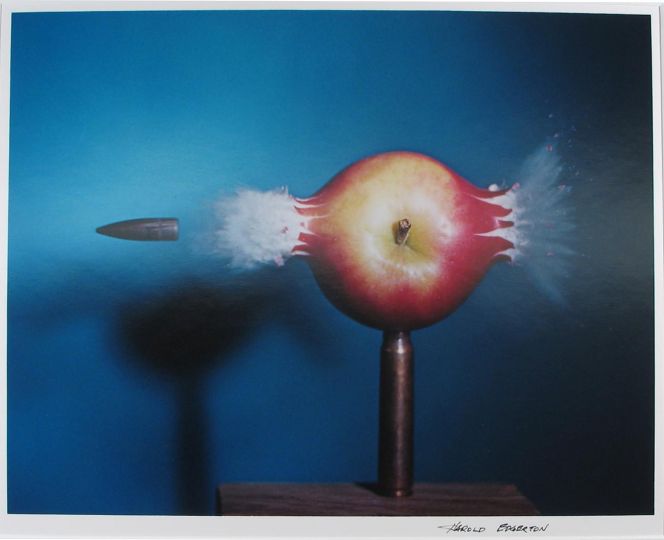Bruce Silverstein Gallery presents Sound & Sight: Pete Turner’s Jazz Album Covers, an exhibition celebrating Turner’s profound impact on the visual culture of Jazz. Pete Turner’s vibrant colors and dreamlike compositions have graced the pages of magazines, including Esquire, Look, and Sports Illustrated; however, his work may be most recognizable to a different audience—those with a passion for jazz. Spanning five decades and over seventy covers, Turner’s pioneering approach infused jazz album covers with conceptual depth and dynamic energy. By mirroring the improvisational and emotive nature of jazz, Turner bridged sound and vision. His Surrealist predilection and unparalleled ability to translate the essence of music into striking visual compositions redefined the role of the album cover in the art world and reshaped how music is experienced. Sound & Sight: Pete Turner’s Jazz Album Covers invites audiences to immerse themselves in the fusion of sound and sight that characterized his work. As you explore his work, ask yourself: can you see the sound? Can you feel the color of jazz?
Before the late 1940s and early 1950s, there was a lack of visual identity in record covers, which reflected how the music industry operated. Vinyl covers were formulaic, with record labels taking precedence over artistic expression; most covers merely showcased the label’s name, logo, or insignia. Regardless of genre— jazz, classical, or pop- this uniformity across record covers was a direct consequence of mass production techniques and an industry-wide disregard for the potential synergy between visuals and music. The album covers would look nearly identical from release to release. Simply put, people did not yet see album covers as a medium for artistic or creative expression. Pete Turner’s approach broke this mold. By translating the essence of sound into striking visual narratives, Turner made album covers an integral part of the listening experience.
Pete Turner’s photography transcended simple portraiture or landscape photography, moving into the realm of conceptual art. His vibrant use of color and abstract forms pushed the boundaries of color to create otherworldly scenes and introduced new dimensions to the visual representation of music. He approached his work with a meticulous yet experimental eye, often manipulating color and light using filters, solarization, and multiple exposures alongside postproduction. When working on the cover for Studio Trieste by Chet Baker, Jim Hall, and Hubert Laws, Turner experimented with Plexiglas, creating a spectrometric, colored lightbox to photograph a bubble. The result is as fleeting and evocative as Chet Baker’s tone could be: the bubble becomes a Surrealist object, resembling the vinyl enclosed, and its marbling, polychromatic colors become a symbol for the mixing of creative energy. His work on albums like A Day in the Life by Wes Montgomery and Night Train by the Oscar Peterson Trio did more than simply capture attention—it shaped the mood and narrative of the records themselves.
For example, in his iconic image Blue Horse, 1961, a silhouetted horse stands against a vast cobalt desertscape, embodying serenity and solitude. In perfect harmony with the syncopated rhythms of Hubert Laws’ Crying Song, the photograph evokes a profound sense of grandeur and adventure, enriching the listener’s journey and introducing a new visual identity to the music. Similarly, Turner’s collaboration with legendary record producer Creed Taylor on Antonio Carlos Jobim’s Wave marked a shift in album art. Instead of opting for a literal interpretation, like a traditional depiction of waves (one immediately recalls Hokusai’s Great Wave, 1831), Turner’s surreal image of a giraffe running across a desert created an unexpected but fitting metaphor for the music’s undulating, fluid rhythms. With Pete Turner, each album cover became a statement, a collaboration between artist and musician.
Pete Turner’s unparalleled ability to translate the essence of music into striking visual compositions redefined the role of the album cover in the art world. Turner’s legacy lives on through his countless iconic images that helped shape the visual identity of jazz music, making him not only a key figure in photography but also an essential collaborator in the history of modern jazz.
Pete Turner (1934–2017) was a groundbreaking American photographer known for his innovative use of color and striking compositions. Born in Albany, New York, and a graduate of the Rochester Institute of Technology, Turner’s early interest in chemistry fueled his lifelong exploration of photographic techniques and bold color palettes. His iconic 1967 image The Giraffe, exhibited at The Metropolitan Museum of Art, marked a pivotal moment in his career, illustrating his approach to color as a graphic element. Turner’s work has been exhibited globally and is part of prestigious collections, including the Maison Européenne de la Photographie in Paris and the International Center of Photography in New York. His life’s archive resides at the George Eastman Museum, where he was honored with the retrospective Pete Turner: Empowered by Color. Turner’s notable publications include Pete Turner Photographs (1986), Pete Turner African Journey (2001), and The Color of Jazz (2006), which documents his legendary jazz album covers. Throughout his career, he received numerous accolades, including the ASMP’s “Outstanding Achievement in Photography” award, and his legacy continues to inspire with his daring visual style.
Sound & Sight : Pete Turner’s Jazz Album Covers
December 12th, 2024 – January 18th, 2025
Bruce Silverstein Gallery
529 W 20th St.
New York, NY 10011
www.brucesilverstein.com
















